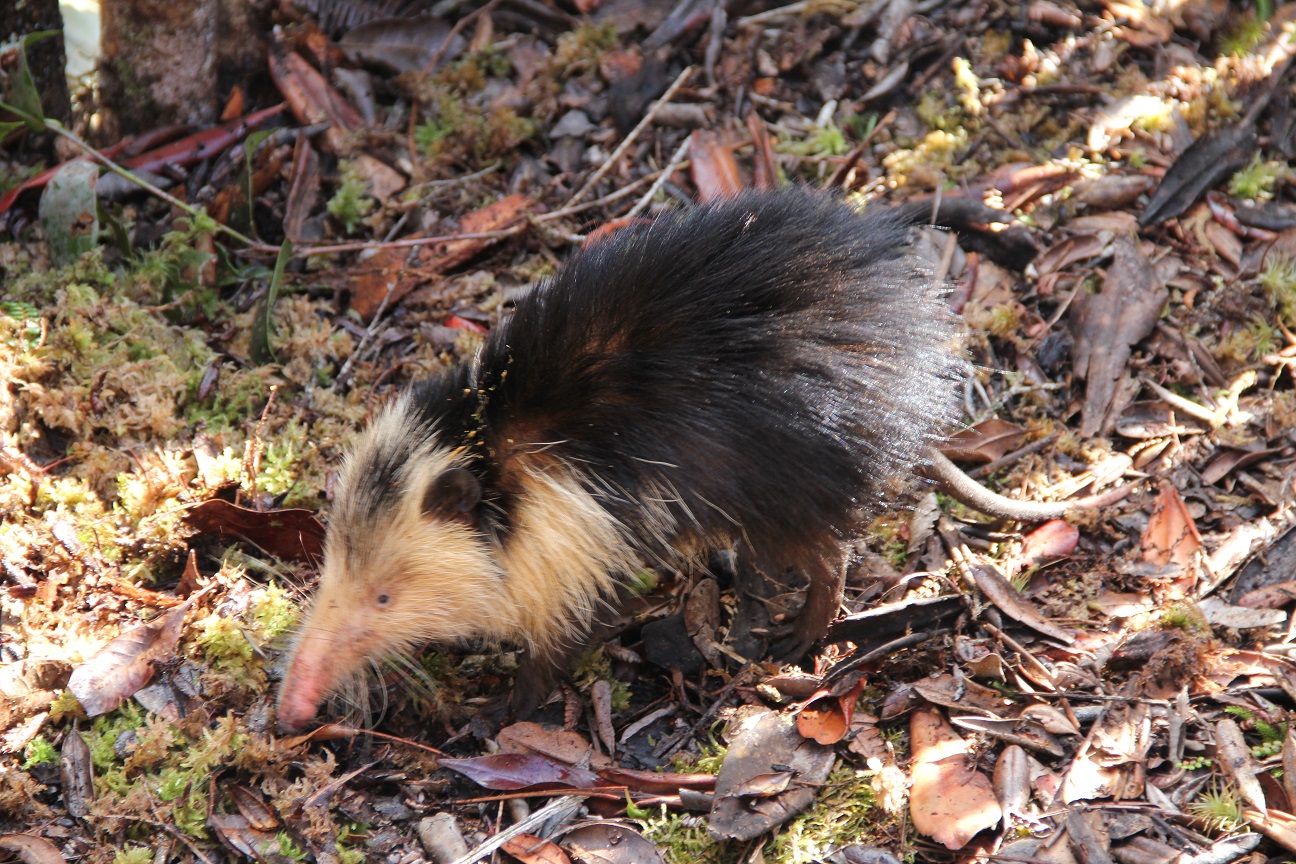This primitive insectivore resembles a large stoutly-built shrew. Like its relative the Hispaniolan Solenodon (Solenodon paradoxus), the Cuban Solenodon (Atopogale cubana) secretes toxic saliva to subdue its prey. The solenodons diverged from all other mammal groups an incredible 76 million years ago and were, until recently, among the dominant predators of the West Indies. The species was once widely distributed in both the eastern and western ends of Cuba, although it appears to have been largely absent from the centre of the island. Today it is limited to Oriente Province at the eastern end of Cuba and possibly only found now in the Alejandro de Humboldt and Sierra del Cristal National Parks. No current population estimates exist, but probably very rare. The species has been considered extinct at various times during the past century. Individuals have been captured in 1974 and 1975, and as recently as 2003 and 2011. Classified as Endangered (EN B1ab(iii,v)) on the IUCN Red List of Threatened Species.
How this species is doing
Pressure
Like many other Antillean animals, this species declined following European colonisation of the West Indies. Most of its preferred forest habitat has now been lost to agriculture and development, and only an estimated 15% of the island’s original vegetation cover remains. The species is also an easy target for introduced predators, such as dogs, cats and mongooses. Since the species had no natural predators before European colonisation of Cuba, and is a slow clumsy mover, it does not possess many defences against introduced animals.
Responses
The species is protected by the USDI (United States Department of the Interior) and important populations occur within at least two National Parks (the Alejandro de Humboldt National Park in the north-eastern part of Cuba, and the Sierra del Cristal National Park, in Holguin province in eastern Cuba). A survey was conducted in the Sierra del Cristal National Park in 2002 by a multidisciplinary team from the Empresa Nacional para la Proteccion de la Flora y Fauna (ENPFF, Cuba) and the Instituto de Ecologia y Sistematica (IES, Cuba), in collaboration with the Durrell Wildlife Conservation Trust (Jersey, UK). The results of this survey will form the basis for developing a long-term management plan for the species in this area. Solenodons are among the few native land mammals that survived human settlement of the islands of the West Indies. In order to develop effective conservation strategies to ensure their survival, we need to understand why almost all the region’s other mammals have already died out. Further studies also need to be carried out into the distribution, abundance and ecology of the species in other regions of eastern Cuba. The impact of introduced predators and potential competition with black rats on the species should be assessed.







